Accommodation · Africa · Attractions · Going Out · Hotels · Morocco · Regions
A Morocco Summer tour – 3 places you can’t miss
If you have not yet booked your Summer vacation… its not going to book itself. And if you happened to look at Morocco, you have plenty good reasons to. Were not talking about spending the night in the dunes of the Sahara desert, where temperatures can easily get out of hand this time of year. Fortunately, Morocco is much more than the desert dunes and, in the summer, it offers spotless beaches and to- die- for seafood, imperial cities filled with secret palaces and timeless Islamic architecture or the majestic Atlas Mountains, a trekkers paradise and home to the unique Berber culture.
 Imagine a stay that combines the sensory overload of the imperial city of Marrakech with a few days in the Atlas Mountains, where mountain walks and tea with the Berbers are a must- do, to end with a relaxing time on the beaches of the Atlantic and try some delicious oysters or just enjoy the waves and the unspotted beaches around Essaouira and Oualidia. Culture , adventure and lots of relaxation time. Not necessarily in that order – that one is up to you. If you are traveling with children, many hotels accept children for free and some even offer dedicated babysitting if you want to escape to a tete a tete candlelight dinner in the city.
1. Marrakech
While in Marrakech, it is cooler (literally) to stay in palm- shaded, pool- blessed Palmeraie riads or jnanes instead of the typical Medina riads. Close enough to the city to quickly get dropped off inside the old town and have a good bite of culture and/ or shopping. The red city has so much to offer and perhaps a good starting point is Medersa Ben Youssef, a 15th century koranic school, a symphony of zellij, marble floors and noble cedar wood. The nearby Museum of Marrakech is more appealing for its proportions, plaster honeycombs and intricate mosaic designs than its collection of Berber rugs and items, which are probably better found within the souks.
Imagine a stay that combines the sensory overload of the imperial city of Marrakech with a few days in the Atlas Mountains, where mountain walks and tea with the Berbers are a must- do, to end with a relaxing time on the beaches of the Atlantic and try some delicious oysters or just enjoy the waves and the unspotted beaches around Essaouira and Oualidia. Culture , adventure and lots of relaxation time. Not necessarily in that order – that one is up to you. If you are traveling with children, many hotels accept children for free and some even offer dedicated babysitting if you want to escape to a tete a tete candlelight dinner in the city.
1. Marrakech
While in Marrakech, it is cooler (literally) to stay in palm- shaded, pool- blessed Palmeraie riads or jnanes instead of the typical Medina riads. Close enough to the city to quickly get dropped off inside the old town and have a good bite of culture and/ or shopping. The red city has so much to offer and perhaps a good starting point is Medersa Ben Youssef, a 15th century koranic school, a symphony of zellij, marble floors and noble cedar wood. The nearby Museum of Marrakech is more appealing for its proportions, plaster honeycombs and intricate mosaic designs than its collection of Berber rugs and items, which are probably better found within the souks.
 The small yet artful Maison de La Photographie showcases a unique collection of photos of Morocco taken between 1870s and 1950s and a roof terrace which serves fresh orange juices and tasty tagines, if not the best 360 degree- view terrace this side of the Medina.
The small yet artful Maison de La Photographie showcases a unique collection of photos of Morocco taken between 1870s and 1950s and a roof terrace which serves fresh orange juices and tasty tagines, if not the best 360 degree- view terrace this side of the Medina.
 Just before dusk, make sure to visit Jemaa El Fna, a fair best thought of as a mash-up between a county fair and freak show
albeit with an authentic Moroccan overlay. The square mostly deserted during the day, suddenly comes alive at sunset with musicians, acrobats, snake charmers, witch doctors and food stalls as if they never left the place. Then there is the 19th century Bahia palace, an epitome of Islamic art of the era and former residence of the grand vizier. The nearby Saadi Tombs hold the remains of the sultans that gave the city its last golden age, the 16th and 17th century. The Carrara marble generously used throughout bears witness to the wealth of the dynasty and so do the nearby ruins of the Badi palace, the most extraordinary building of its time in North Africa.
Just before dusk, make sure to visit Jemaa El Fna, a fair best thought of as a mash-up between a county fair and freak show
albeit with an authentic Moroccan overlay. The square mostly deserted during the day, suddenly comes alive at sunset with musicians, acrobats, snake charmers, witch doctors and food stalls as if they never left the place. Then there is the 19th century Bahia palace, an epitome of Islamic art of the era and former residence of the grand vizier. The nearby Saadi Tombs hold the remains of the sultans that gave the city its last golden age, the 16th and 17th century. The Carrara marble generously used throughout bears witness to the wealth of the dynasty and so do the nearby ruins of the Badi palace, the most extraordinary building of its time in North Africa.
 Late afternoon, you would perhaps care to have a cocktail or coffee on the terrace of the legendary La Mamounia hotel, also home to the most romantic gardens in Marrakech where the Rolling Stones and more recently Sharon Stone stayed. Marrakech offers some of the best Moroccan restaurants in the country but also some of the best French restaurants this side of Nice. As lunch time approaches and temperatures rise, you will perhaps prefer to return to your guest house, have lunch and snooze by the pool.
2. Atlas Mountains
Up in the Atlas Mountains you can trek or hike around, get to know the Berbers and the children can get friendly with the local animals. Some places cater especially for them, such as Kasbah Tamadot where they can ride the resident mules, venture off on a Moroccan treasure hunt or learn how to make delicious local dishes and splash around the outdoor infinity pool. A mere one hour trip from the city, you will enter this lush kingdom of forests, lakes and waterfalls to arrive at your guesthouse and sip a mint tea while taking in the jaw- dropping views.
Late afternoon, you would perhaps care to have a cocktail or coffee on the terrace of the legendary La Mamounia hotel, also home to the most romantic gardens in Marrakech where the Rolling Stones and more recently Sharon Stone stayed. Marrakech offers some of the best Moroccan restaurants in the country but also some of the best French restaurants this side of Nice. As lunch time approaches and temperatures rise, you will perhaps prefer to return to your guest house, have lunch and snooze by the pool.
2. Atlas Mountains
Up in the Atlas Mountains you can trek or hike around, get to know the Berbers and the children can get friendly with the local animals. Some places cater especially for them, such as Kasbah Tamadot where they can ride the resident mules, venture off on a Moroccan treasure hunt or learn how to make delicious local dishes and splash around the outdoor infinity pool. A mere one hour trip from the city, you will enter this lush kingdom of forests, lakes and waterfalls to arrive at your guesthouse and sip a mint tea while taking in the jaw- dropping views.
 In Imlil, at 1800 meters high, you are blessed with some of the best views and trekking routes south of Marrakech. You can choose to tour the mountains by foot up to the local waterfalls past Kasbah Toubkal and stop for a coffee to admire the valleys beneath. Or, if you are more serious about your trekking, arrange the services of a local guide and mule(s), which will adapt to your level and carry you and/ or your luggage. Furthermore, you can choose to spend a night in a gite ( cottage), at over 3000 meters altitude and descend the next morning back to the village.
In Imlil, at 1800 meters high, you are blessed with some of the best views and trekking routes south of Marrakech. You can choose to tour the mountains by foot up to the local waterfalls past Kasbah Toubkal and stop for a coffee to admire the valleys beneath. Or, if you are more serious about your trekking, arrange the services of a local guide and mule(s), which will adapt to your level and carry you and/ or your luggage. Furthermore, you can choose to spend a night in a gite ( cottage), at over 3000 meters altitude and descend the next morning back to the village.
 Or you may choose to let your driver- guide take you on a driven tour of the surrounding area, whether it means having tea with a Berber family, discover the nearby still waters of Ouirgane lake , freshen up under the waterfalls in the Ourika Valley or visit the 12th century mosque of Tinmel.
3. Atlantic coast
Essaouira, on the Atlantic coast, is your best bet if you want bohemian ambiance, a Medina full of character and camel ride or quad bike riding in the nearby dunes. Although it gets busy with locals in the summer, you can still find wild beaches if you know where to look. Jews, Arabs, Berbers and English left behind a very cosmopolitan, yet laid back town with fortified walls and bastions, white washed houses and dozens of art galleries. Centuries ago it was Morocco’s main port from where the gold, feathers, ivory, ostrich and slaves filled caravans were shipping their loads to the rest of the world…
Or you may choose to let your driver- guide take you on a driven tour of the surrounding area, whether it means having tea with a Berber family, discover the nearby still waters of Ouirgane lake , freshen up under the waterfalls in the Ourika Valley or visit the 12th century mosque of Tinmel.
3. Atlantic coast
Essaouira, on the Atlantic coast, is your best bet if you want bohemian ambiance, a Medina full of character and camel ride or quad bike riding in the nearby dunes. Although it gets busy with locals in the summer, you can still find wild beaches if you know where to look. Jews, Arabs, Berbers and English left behind a very cosmopolitan, yet laid back town with fortified walls and bastions, white washed houses and dozens of art galleries. Centuries ago it was Morocco’s main port from where the gold, feathers, ivory, ostrich and slaves filled caravans were shipping their loads to the rest of the world…
 Recently added to the very select UNESCO world site list, Essaouira still feels like you travel in time to, perhaps, Mykonos or Ibiza of the 1970s. Nearby dunes are ideal setting for riding a camel or a quad bike, while the strong wind attracts an all- year- round crowd of surfers and wind surfers.
Recently added to the very select UNESCO world site list, Essaouira still feels like you travel in time to, perhaps, Mykonos or Ibiza of the 1970s. Nearby dunes are ideal setting for riding a camel or a quad bike, while the strong wind attracts an all- year- round crowd of surfers and wind surfers.
 Oualidia is the best alternative if all you want to do is get away from the crowds and just swim, relax and soak up the sun as the loudest sound is the lug and suck of the sea muttering as it turns over against the shore. On the way to El Jadida, this remote fishing village, built around a wide lagoon midway up Moroccos Atlantic coast, is a quiet, slightly out-of-time place. For much of the second half of the 20th century, the Moroccan bourgeoisie decamped here in the summer on their weekend holidays, eschewing the urban fug for their modest white-and-blue vacation houses. Today, well-heeled Moroccans come for the clean air, the tranquillity and the best oysters in the country, which are served tableside on the terrace at LHippocampe or the opulent 12- room Sultana Hotel. The most you can do here, besides leaving the world behind, is wander, stare and beach-comb or take a boat ride around the lagoon.
Oualidia is the best alternative if all you want to do is get away from the crowds and just swim, relax and soak up the sun as the loudest sound is the lug and suck of the sea muttering as it turns over against the shore. On the way to El Jadida, this remote fishing village, built around a wide lagoon midway up Moroccos Atlantic coast, is a quiet, slightly out-of-time place. For much of the second half of the 20th century, the Moroccan bourgeoisie decamped here in the summer on their weekend holidays, eschewing the urban fug for their modest white-and-blue vacation houses. Today, well-heeled Moroccans come for the clean air, the tranquillity and the best oysters in the country, which are served tableside on the terrace at LHippocampe or the opulent 12- room Sultana Hotel. The most you can do here, besides leaving the world behind, is wander, stare and beach-comb or take a boat ride around the lagoon.
 Cristian Martinus is Managing Director at Sun Trails.
If you would like to be a guest blogger on A Luxury Travel Blog in order to raise your profile, please contact us.
Cristian Martinus is Managing Director at Sun Trails.
If you would like to be a guest blogger on A Luxury Travel Blog in order to raise your profile, please contact us.
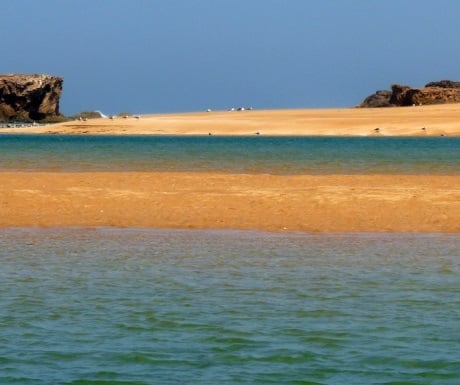 Imagine a stay that combines the sensory overload of the imperial city of Marrakech with a few days in the Atlas Mountains, where mountain walks and tea with the Berbers are a must- do, to end with a relaxing time on the beaches of the Atlantic and try some delicious oysters or just enjoy the waves and the unspotted beaches around Essaouira and Oualidia. Culture , adventure and lots of relaxation time. Not necessarily in that order – that one is up to you. If you are traveling with children, many hotels accept children for free and some even offer dedicated babysitting if you want to escape to a tete a tete candlelight dinner in the city.
1. Marrakech
While in Marrakech, it is cooler (literally) to stay in palm- shaded, pool- blessed Palmeraie riads or jnanes instead of the typical Medina riads. Close enough to the city to quickly get dropped off inside the old town and have a good bite of culture and/ or shopping. The red city has so much to offer and perhaps a good starting point is Medersa Ben Youssef, a 15th century koranic school, a symphony of zellij, marble floors and noble cedar wood. The nearby Museum of Marrakech is more appealing for its proportions, plaster honeycombs and intricate mosaic designs than its collection of Berber rugs and items, which are probably better found within the souks.
Imagine a stay that combines the sensory overload of the imperial city of Marrakech with a few days in the Atlas Mountains, where mountain walks and tea with the Berbers are a must- do, to end with a relaxing time on the beaches of the Atlantic and try some delicious oysters or just enjoy the waves and the unspotted beaches around Essaouira and Oualidia. Culture , adventure and lots of relaxation time. Not necessarily in that order – that one is up to you. If you are traveling with children, many hotels accept children for free and some even offer dedicated babysitting if you want to escape to a tete a tete candlelight dinner in the city.
1. Marrakech
While in Marrakech, it is cooler (literally) to stay in palm- shaded, pool- blessed Palmeraie riads or jnanes instead of the typical Medina riads. Close enough to the city to quickly get dropped off inside the old town and have a good bite of culture and/ or shopping. The red city has so much to offer and perhaps a good starting point is Medersa Ben Youssef, a 15th century koranic school, a symphony of zellij, marble floors and noble cedar wood. The nearby Museum of Marrakech is more appealing for its proportions, plaster honeycombs and intricate mosaic designs than its collection of Berber rugs and items, which are probably better found within the souks.
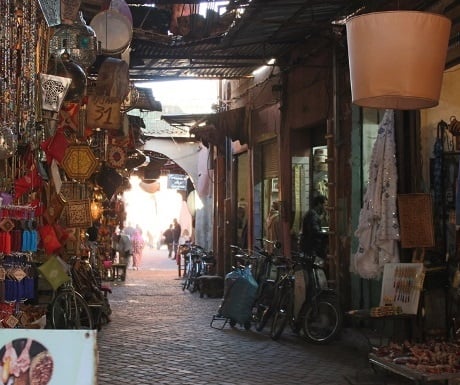 The small yet artful Maison de La Photographie showcases a unique collection of photos of Morocco taken between 1870s and 1950s and a roof terrace which serves fresh orange juices and tasty tagines, if not the best 360 degree- view terrace this side of the Medina.
The small yet artful Maison de La Photographie showcases a unique collection of photos of Morocco taken between 1870s and 1950s and a roof terrace which serves fresh orange juices and tasty tagines, if not the best 360 degree- view terrace this side of the Medina.
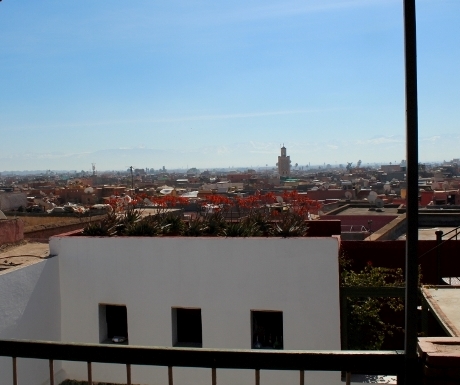 Just before dusk, make sure to visit Jemaa El Fna, a fair best thought of as a mash-up between a county fair and freak show
albeit with an authentic Moroccan overlay. The square mostly deserted during the day, suddenly comes alive at sunset with musicians, acrobats, snake charmers, witch doctors and food stalls as if they never left the place. Then there is the 19th century Bahia palace, an epitome of Islamic art of the era and former residence of the grand vizier. The nearby Saadi Tombs hold the remains of the sultans that gave the city its last golden age, the 16th and 17th century. The Carrara marble generously used throughout bears witness to the wealth of the dynasty and so do the nearby ruins of the Badi palace, the most extraordinary building of its time in North Africa.
Just before dusk, make sure to visit Jemaa El Fna, a fair best thought of as a mash-up between a county fair and freak show
albeit with an authentic Moroccan overlay. The square mostly deserted during the day, suddenly comes alive at sunset with musicians, acrobats, snake charmers, witch doctors and food stalls as if they never left the place. Then there is the 19th century Bahia palace, an epitome of Islamic art of the era and former residence of the grand vizier. The nearby Saadi Tombs hold the remains of the sultans that gave the city its last golden age, the 16th and 17th century. The Carrara marble generously used throughout bears witness to the wealth of the dynasty and so do the nearby ruins of the Badi palace, the most extraordinary building of its time in North Africa.
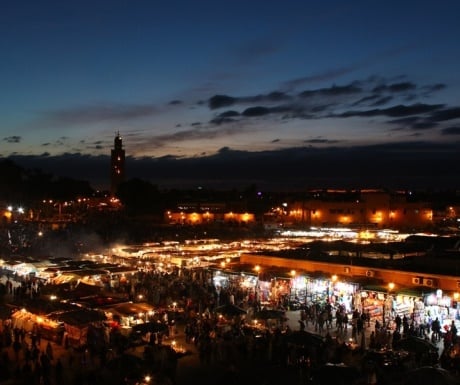 Late afternoon, you would perhaps care to have a cocktail or coffee on the terrace of the legendary La Mamounia hotel, also home to the most romantic gardens in Marrakech where the Rolling Stones and more recently Sharon Stone stayed. Marrakech offers some of the best Moroccan restaurants in the country but also some of the best French restaurants this side of Nice. As lunch time approaches and temperatures rise, you will perhaps prefer to return to your guest house, have lunch and snooze by the pool.
2. Atlas Mountains
Up in the Atlas Mountains you can trek or hike around, get to know the Berbers and the children can get friendly with the local animals. Some places cater especially for them, such as Kasbah Tamadot where they can ride the resident mules, venture off on a Moroccan treasure hunt or learn how to make delicious local dishes and splash around the outdoor infinity pool. A mere one hour trip from the city, you will enter this lush kingdom of forests, lakes and waterfalls to arrive at your guesthouse and sip a mint tea while taking in the jaw- dropping views.
Late afternoon, you would perhaps care to have a cocktail or coffee on the terrace of the legendary La Mamounia hotel, also home to the most romantic gardens in Marrakech where the Rolling Stones and more recently Sharon Stone stayed. Marrakech offers some of the best Moroccan restaurants in the country but also some of the best French restaurants this side of Nice. As lunch time approaches and temperatures rise, you will perhaps prefer to return to your guest house, have lunch and snooze by the pool.
2. Atlas Mountains
Up in the Atlas Mountains you can trek or hike around, get to know the Berbers and the children can get friendly with the local animals. Some places cater especially for them, such as Kasbah Tamadot where they can ride the resident mules, venture off on a Moroccan treasure hunt or learn how to make delicious local dishes and splash around the outdoor infinity pool. A mere one hour trip from the city, you will enter this lush kingdom of forests, lakes and waterfalls to arrive at your guesthouse and sip a mint tea while taking in the jaw- dropping views.
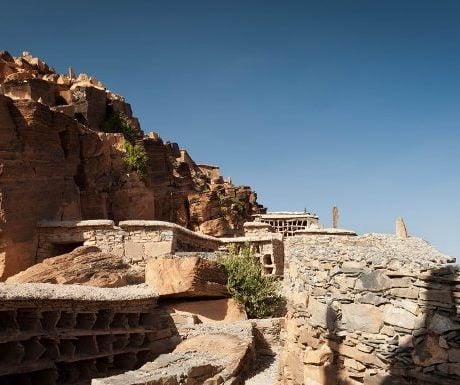 In Imlil, at 1800 meters high, you are blessed with some of the best views and trekking routes south of Marrakech. You can choose to tour the mountains by foot up to the local waterfalls past Kasbah Toubkal and stop for a coffee to admire the valleys beneath. Or, if you are more serious about your trekking, arrange the services of a local guide and mule(s), which will adapt to your level and carry you and/ or your luggage. Furthermore, you can choose to spend a night in a gite ( cottage), at over 3000 meters altitude and descend the next morning back to the village.
In Imlil, at 1800 meters high, you are blessed with some of the best views and trekking routes south of Marrakech. You can choose to tour the mountains by foot up to the local waterfalls past Kasbah Toubkal and stop for a coffee to admire the valleys beneath. Or, if you are more serious about your trekking, arrange the services of a local guide and mule(s), which will adapt to your level and carry you and/ or your luggage. Furthermore, you can choose to spend a night in a gite ( cottage), at over 3000 meters altitude and descend the next morning back to the village.
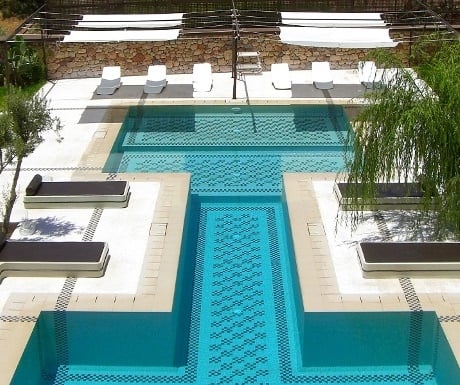 Or you may choose to let your driver- guide take you on a driven tour of the surrounding area, whether it means having tea with a Berber family, discover the nearby still waters of Ouirgane lake , freshen up under the waterfalls in the Ourika Valley or visit the 12th century mosque of Tinmel.
3. Atlantic coast
Essaouira, on the Atlantic coast, is your best bet if you want bohemian ambiance, a Medina full of character and camel ride or quad bike riding in the nearby dunes. Although it gets busy with locals in the summer, you can still find wild beaches if you know where to look. Jews, Arabs, Berbers and English left behind a very cosmopolitan, yet laid back town with fortified walls and bastions, white washed houses and dozens of art galleries. Centuries ago it was Morocco’s main port from where the gold, feathers, ivory, ostrich and slaves filled caravans were shipping their loads to the rest of the world…
Or you may choose to let your driver- guide take you on a driven tour of the surrounding area, whether it means having tea with a Berber family, discover the nearby still waters of Ouirgane lake , freshen up under the waterfalls in the Ourika Valley or visit the 12th century mosque of Tinmel.
3. Atlantic coast
Essaouira, on the Atlantic coast, is your best bet if you want bohemian ambiance, a Medina full of character and camel ride or quad bike riding in the nearby dunes. Although it gets busy with locals in the summer, you can still find wild beaches if you know where to look. Jews, Arabs, Berbers and English left behind a very cosmopolitan, yet laid back town with fortified walls and bastions, white washed houses and dozens of art galleries. Centuries ago it was Morocco’s main port from where the gold, feathers, ivory, ostrich and slaves filled caravans were shipping their loads to the rest of the world…
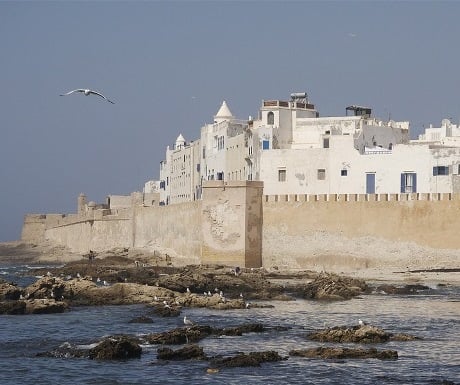 Recently added to the very select UNESCO world site list, Essaouira still feels like you travel in time to, perhaps, Mykonos or Ibiza of the 1970s. Nearby dunes are ideal setting for riding a camel or a quad bike, while the strong wind attracts an all- year- round crowd of surfers and wind surfers.
Recently added to the very select UNESCO world site list, Essaouira still feels like you travel in time to, perhaps, Mykonos or Ibiza of the 1970s. Nearby dunes are ideal setting for riding a camel or a quad bike, while the strong wind attracts an all- year- round crowd of surfers and wind surfers.
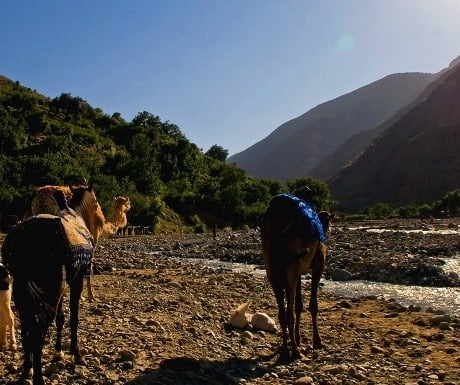 Oualidia is the best alternative if all you want to do is get away from the crowds and just swim, relax and soak up the sun as the loudest sound is the lug and suck of the sea muttering as it turns over against the shore. On the way to El Jadida, this remote fishing village, built around a wide lagoon midway up Moroccos Atlantic coast, is a quiet, slightly out-of-time place. For much of the second half of the 20th century, the Moroccan bourgeoisie decamped here in the summer on their weekend holidays, eschewing the urban fug for their modest white-and-blue vacation houses. Today, well-heeled Moroccans come for the clean air, the tranquillity and the best oysters in the country, which are served tableside on the terrace at LHippocampe or the opulent 12- room Sultana Hotel. The most you can do here, besides leaving the world behind, is wander, stare and beach-comb or take a boat ride around the lagoon.
Oualidia is the best alternative if all you want to do is get away from the crowds and just swim, relax and soak up the sun as the loudest sound is the lug and suck of the sea muttering as it turns over against the shore. On the way to El Jadida, this remote fishing village, built around a wide lagoon midway up Moroccos Atlantic coast, is a quiet, slightly out-of-time place. For much of the second half of the 20th century, the Moroccan bourgeoisie decamped here in the summer on their weekend holidays, eschewing the urban fug for their modest white-and-blue vacation houses. Today, well-heeled Moroccans come for the clean air, the tranquillity and the best oysters in the country, which are served tableside on the terrace at LHippocampe or the opulent 12- room Sultana Hotel. The most you can do here, besides leaving the world behind, is wander, stare and beach-comb or take a boat ride around the lagoon.
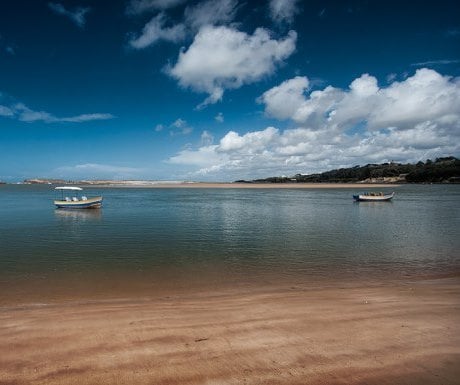 Cristian Martinus is Managing Director at Sun Trails.
If you would like to be a guest blogger on A Luxury Travel Blog in order to raise your profile, please contact us.
Cristian Martinus is Managing Director at Sun Trails.
If you would like to be a guest blogger on A Luxury Travel Blog in order to raise your profile, please contact us.Did you enjoy this article?
Receive similar content direct to your inbox.


Those sounds wonderful and my choices also for visiting sites in Marrakesh and the surrounding areas. Essaouira was a beautiful city to visit with its blue doors and white walls.